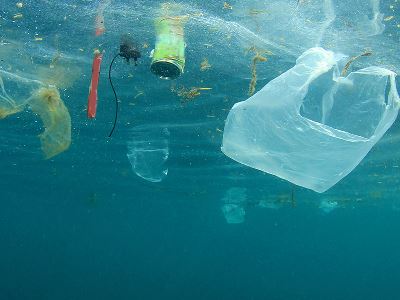“International Scientists Dive Into the Unknown: Unlocking the Secrets of Microplastics in the Ocean”
An international team of scientists, working near the coast of Panama, has embarked on a groundbreaking study to examine the presence and behavior of microplastics in the ocean. Led by Alvis Vianelon, an assistant chemist at Daniya Alborgia University, the team aims to unravel the mysteries surrounding these tiny plastic particles and their impact on marine life.
Oceana, a non-profit organization dedicated to preserving marine ecosystems, revealed that a staggering 33 million tons of plastic waste find their way into the oceans each year. Over time, this waste breaks down into microplastics, which are particles smaller than 5 millimeters in size.
According to a study conducted in the Middle East last year, it was found that there are approximately 1.9 million microplastic particles per square kilometer in the ocean. This emphasizes the urgency of understanding the movement and effects of these particles, as highlighted by Vianelon and his team.
One of the key questions that the researchers are trying to answer is what happens to microplastics once they enter the ocean. Laura Saymon, another researcher from Daniya Alborgia University, explains the importance of comprehending how these particles transition from land to sea.
While it is well-known that marine pollution is primarily concentrated near coasts, the true extent of its consequences remains largely unknown. A study conducted by 5 Gyres, a plastic pollution research institute, estimates that there are currently a staggering 170 trillion plastic particles in the ocean, with over 21,000 particles per person. This emphasizes the need for a comprehensive understanding of the impact of microplastics on our environment.
Vianelon highlights the concerning fact that certain marine organisms, including ones we consume such as tuna, shrimp, and sardines, can ingest these microplastics. This adds another layer of complexity to the issue and raises concerns about the potential implications for human health.
The data collected by the team of researchers holds the key to unlocking a deeper understanding of the effects of microplastics on our planet. From their role in accelerating global warming to their potential health risks, the findings from this study are vital in shaping effective strategies to mitigate this crisis.
This groundbreaking research is being carried out on a vessel belonging to the Schmidt Ocean Institute, a non-profit organization funded by Eric Schmidt, former executive director of Google, and his wife Wendy. Their support and dedication to scientific progress have made this study possible.
In conclusion, the work being done by the international team of scientists near the coast of Panama is shedding light on the presence and behavior of microplastics in the ocean. Their findings will not only enhance our understanding of the impact of microplastics on marine life but also contribute to the global efforts to protect our oceans and the health of our planet.</p

